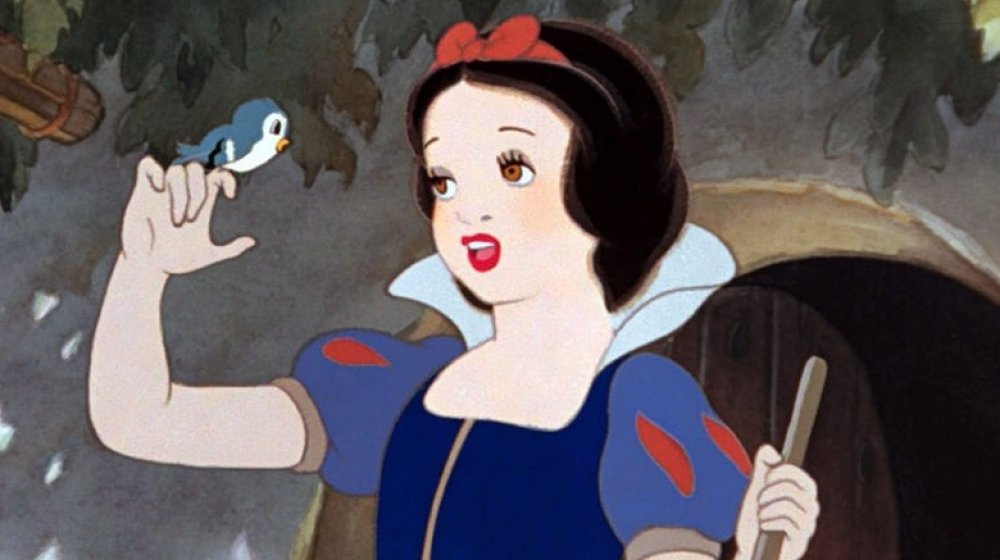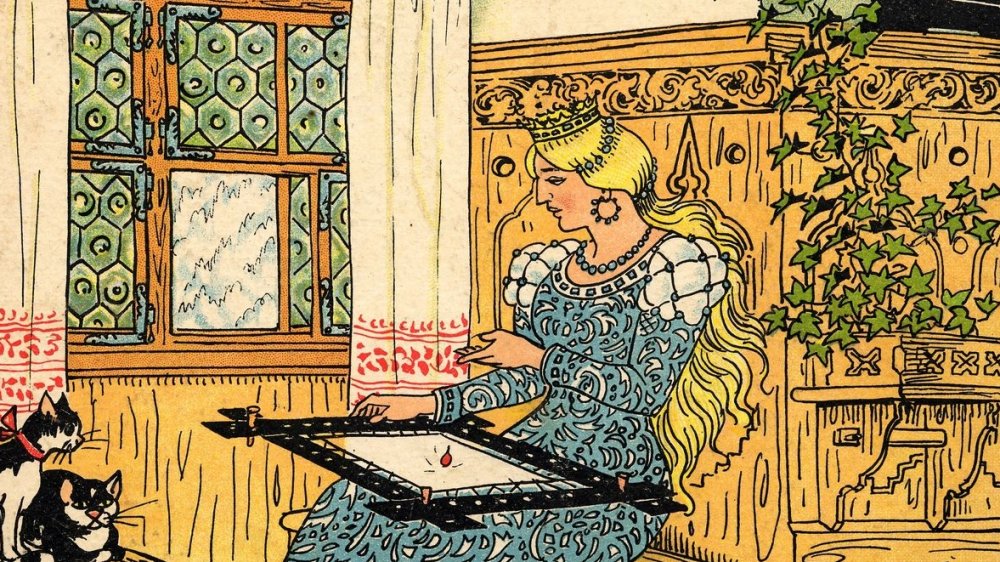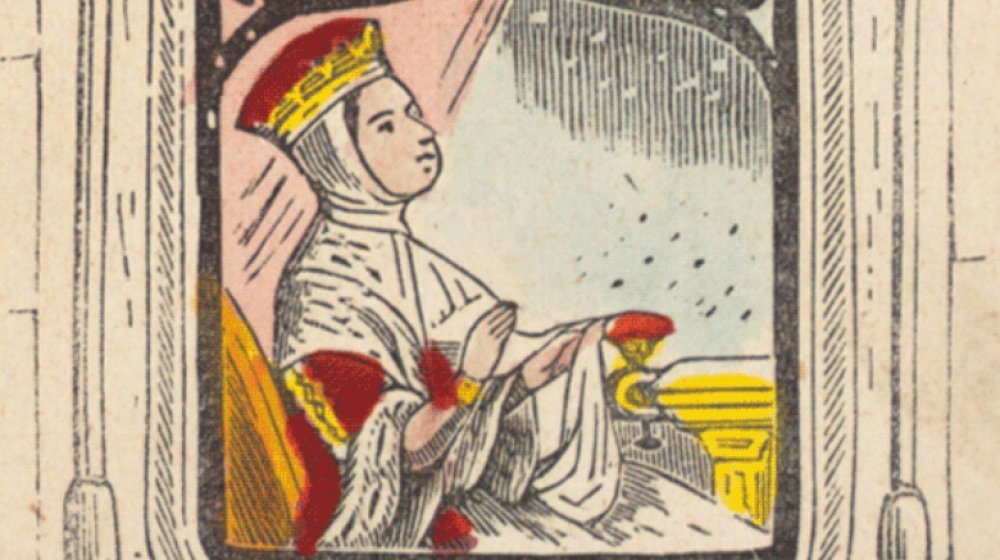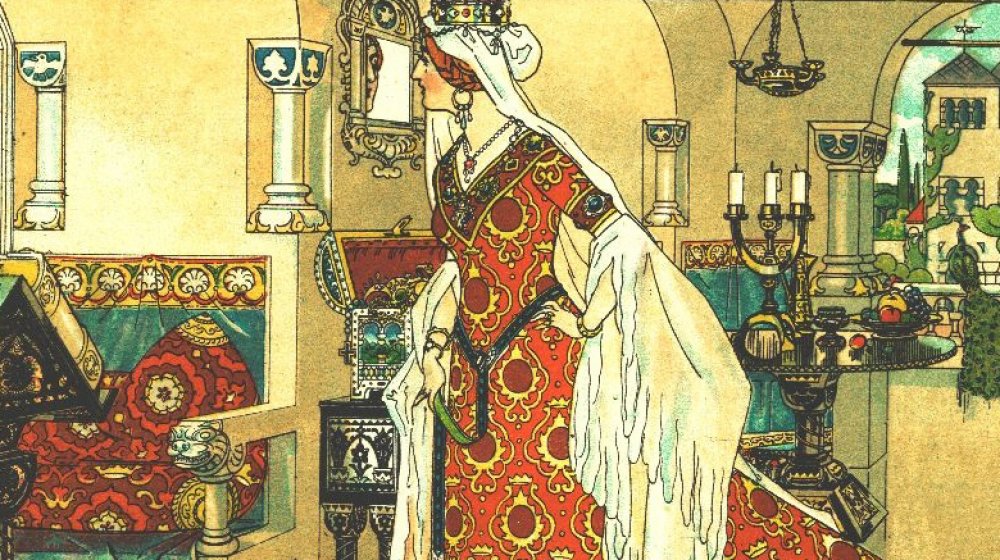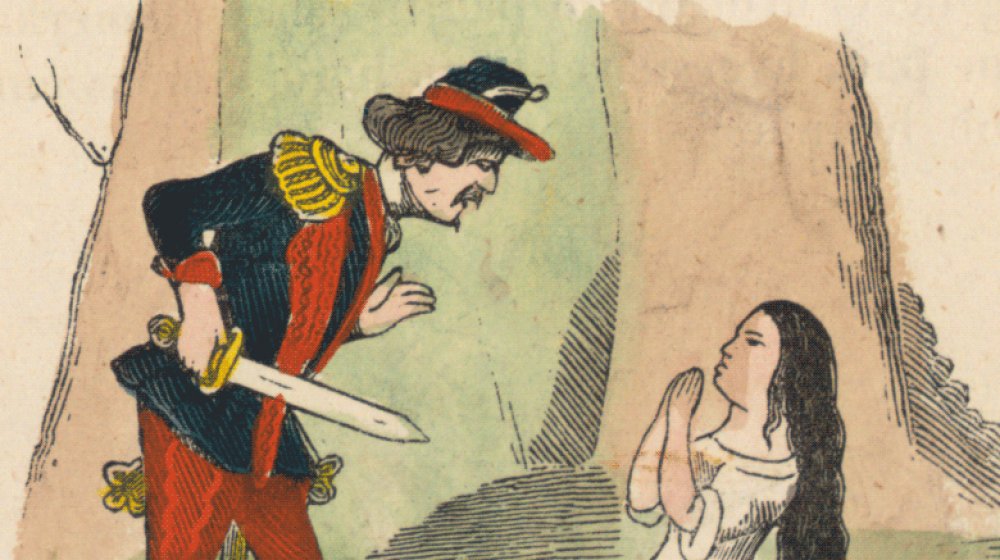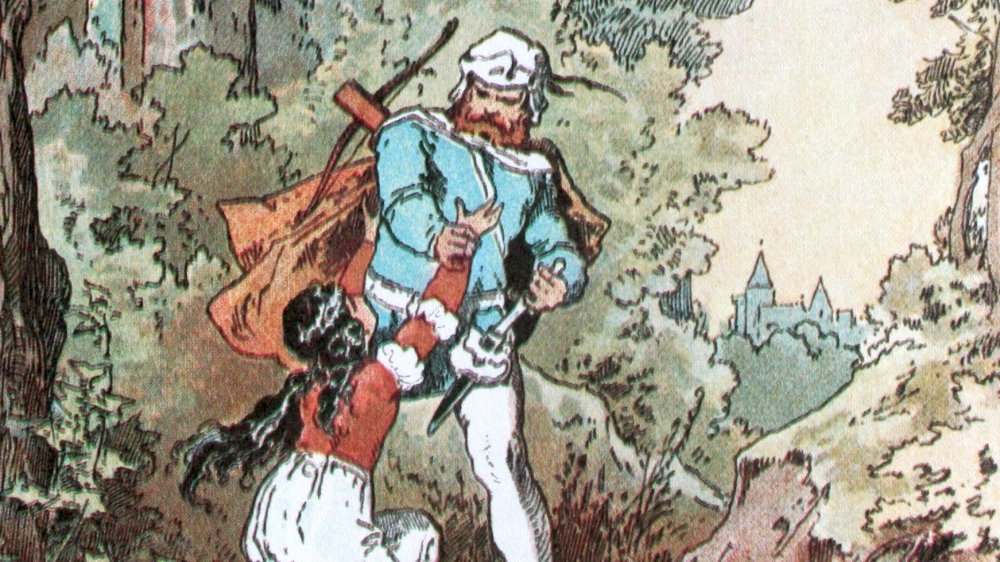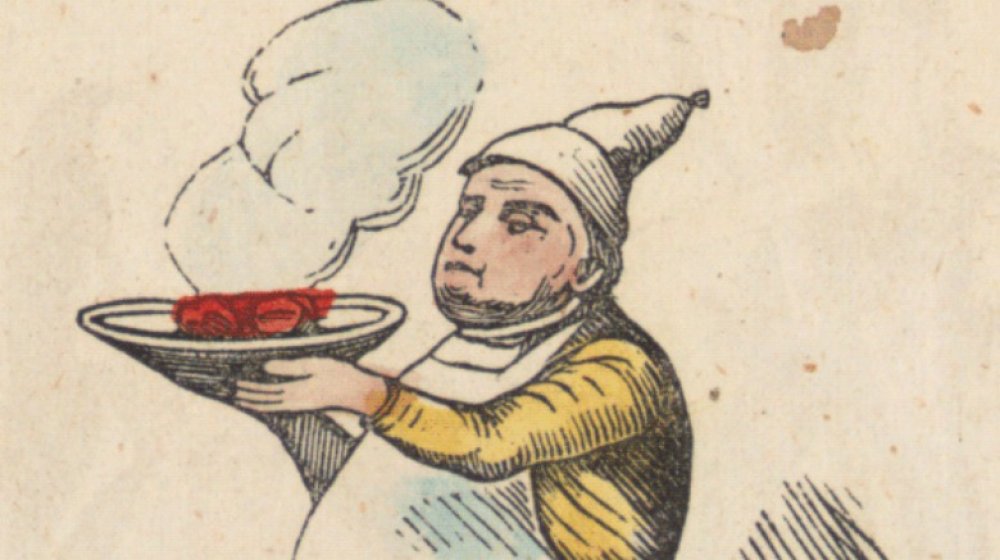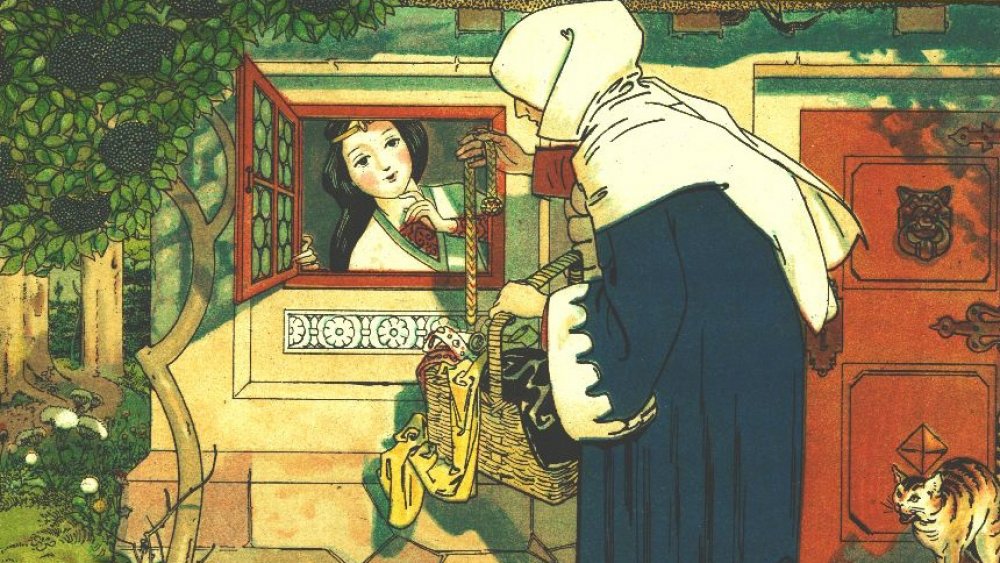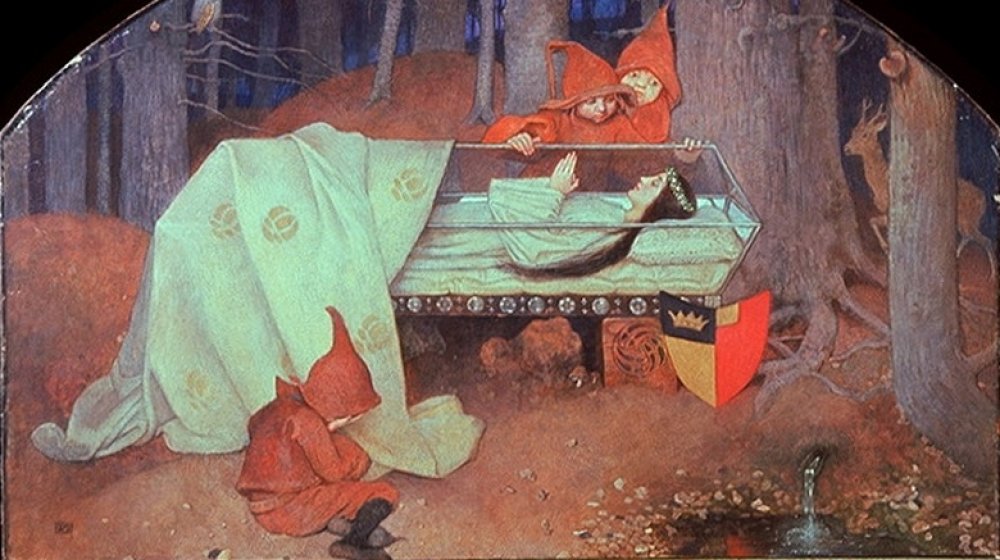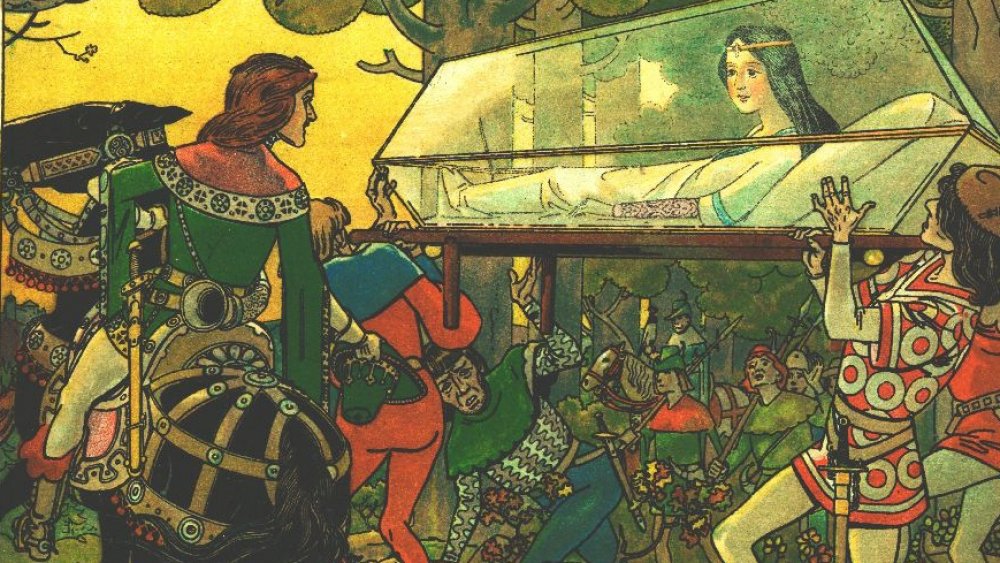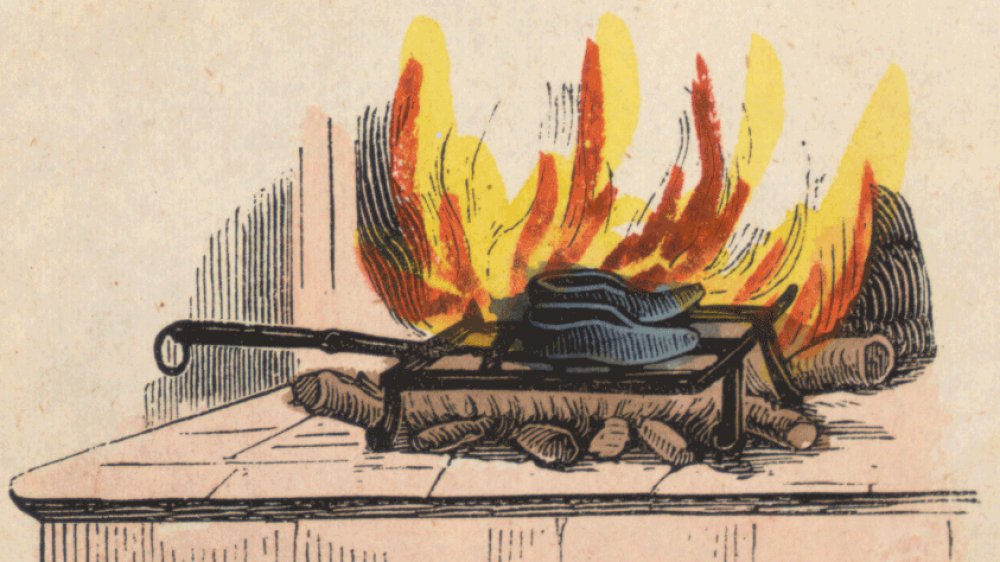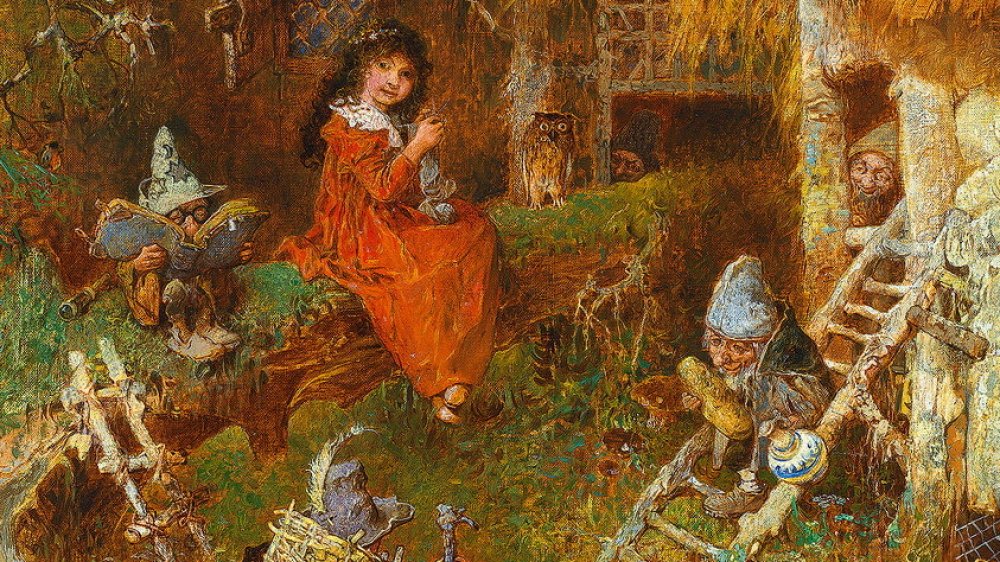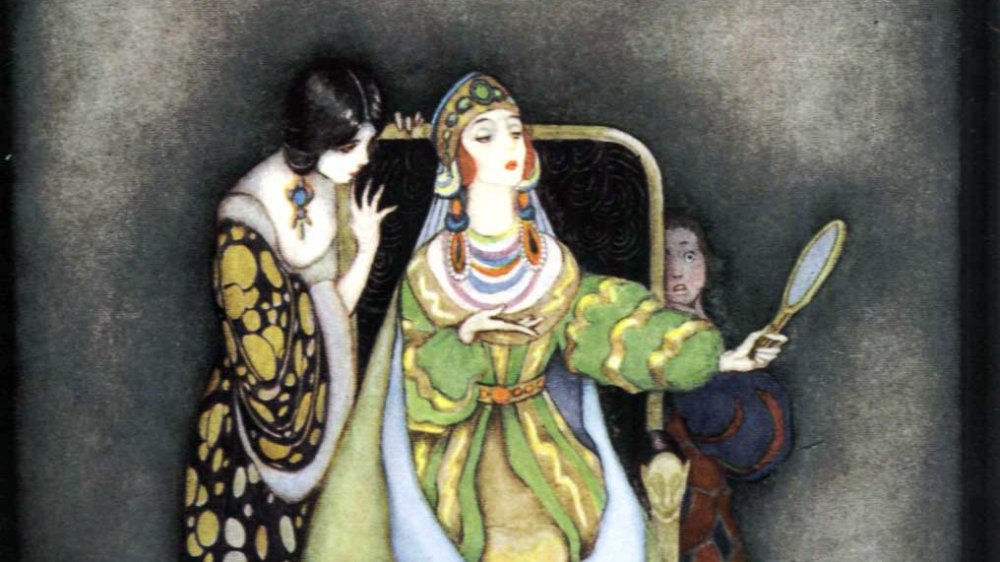Snow White: The Messed Up Origins Of Disney's Classic Movie
Walt Disney and his studio were masters of animated shorts, such as the famous Steamboat Willie that introduced Mickey Mouse to the world. But Disney had a dream that was bigger than short films. He wanted to make an animated feature film, and in 1937, the studio released Snow White and the Seven Dwarfs.
The industry thought it would be a failure, with critics derisively calling it "Disney's Folly." Instead, it was a massive hit, breaking box office records right and left and cementing Walt Disney Pictures as an innovator in both animation and filmmaking. But as it turns out, Snow White is a Disney movie that's inspired by a seriously dark story, courtesy of two famous folklorists. Based on centuries of real folklore, the Brothers Grimm catalogued "Snow White" and several other stories into Grimms' Fairy Tales in 1812, and they were far darker than what we're used to. So when it came time for Disney to make their movie, they were forced to deviate a bit from the original tale. So if you want the grisly details, here are the messed up origins of the Disney's classic take on Snow White.
Snow White gets her name from a strange place
In the Disney film, there's no explanation for why Snow White gets that name, other than her being, well, white. It's just one of those fairy tale names, it doesn't have to make sense, right? But it turns out that the Brothers Grimm's original version of the tale actually gives her name an origin story.
Originally, Snow White's mother is sewing while watching snow fall at the castle when she accidentally pricks herself with her needle. The drops of blood lands on the fresh snow (apparently the window — said to have a frame of ebony wood — was open, which sounds sort of uncomfortable if it's snowing) and causes her mother to say, "If only I had a child as white as snow, lips as red as blood, and as black as the wood in this frame." That's a pretty creepy thing to say out of nowhere, but hey, fairy tale parents are weird.
This scene doesn't appear in the Disney version at all, but they do refer to it. The Magic Mirror, when first describing Snow White, says she has "lips as red as rose, hair as black as ebony, skin as white as snow." As you might have noticed, they skip over the whole red as blood part, making it much tamer with the whole flower analogy.
Snow White has actual parents
Disney's version completely leaves out any mention whatsoever of Snow White's biological family. She has her evil stepmother, the Queen, sometimes known as Queen Grimhilde, and that's it. If there's a queen, who's the king? And just who was Snow White's mother, since she definitely has one in the fairy tale?
Well, in the Grimm Brothers' story, Snow White's mom is the original queen, meaning Snow White is indeed a princess by birth. Unfortunately, the mom dies during childbirth, and the king remarries a year later. It's a bit surprising Disney didn't mention this, since nowadays they're notorious for hitting you in the face with dead parents in many of their films. But the original queen is simply a non-entity in the film.
The king in the fairy tale is mentioned exactly once, when he marries the evil queen. He doesn't come up again in the Grimm Brothers' version, and he isn't in the Disney version at all. But there are some variations out there (remember that the stories came from real folklore) in which the evil queen is either implied to be, or is outright named as, the king's killer. The Snow White and the Huntsman movies with Chris Hemsworth are based on this variation of the story, for example.
The Queen is a legit witch in the fairy tale
While Disney's evil queen performs magic and even turns herself into an old crone, this is never implied to be anything other than typical fairy tale evil magic. The only character who ever refers to her as a witch is Grumpy, and he literally calls all women witches in a line just before that, so it seems pretty clear we're not supposed to take him literally on that point. Let's just say that they call him Grumpy for a reason.
In the Grimm Brothers' story, however, the Queen is explicitly described as a witch and her magic as witchcraft. They don't mince words about it at all. The Queen is specifically noted to understand witchcraft and is familiar with it, which is how she creates the poison apple, among other things. Coming from a time and place where the fear of witches was still a pretty real thing, it makes sense not to pull punches in that regard.
In fact, unlike Disney's villain, the fairy tale queen doesn't need to turn herself into a witch because she already is one. She just wears ordinary disguises when she approaches Snow White instead. She's not an ugly old crone style witch — even the fairy tale casts her as being beautiful but proud and arrogant — but she's a witch nonetheless. Presumably, Disney toned this down to avoid scaring children and potentially upsetting religious people.
The Huntsman is more messed up originally
In the animated film, the Queen orders the Huntsman to take Snow White into the woods and kill her. But before he can even begin his task, the Huntsman decides his conscience won't allow him to kill an innocent princess, so he lets her go, telling her to run away into the woods. What a kind fellow! He just can't bring himself to commit such a horrible crime.
The Huntsman in Grimms' Fairy Tales, however, is not so burdened with a sense of guilt. In the story, things play out much the same. The Queen once again orders the Huntsman to take Snow White into the woods and kill her. Things get a bit different from there, though. In the fairy tale, the Huntsman draws his knife and is actually holding it over Snow White's heart when she begins sobbing and begs him to spare her life. That's a whole lot darker!
More amazing still, the Huntsman does grant her mercy, but he only does it because she's so beautiful. As she runs away, he thinks to himself that the wild animals of the forest will kill and eat her soon. Not so kind now, is he? The Grimms do say that he feels relief, like a stone falling off his heart, for not killing her, but still, this version of the Huntsman is pretty cold-blooded compared to his animated counterpart.
The Huntsman's proof is way creepier
When the evil Queen orders the Huntsman to take Snow White and murder her in the Disney film, she requests proof that he did the deed by asking him to bring back Snow White's heart in a fancy box. It's actually pretty gruesome compared to later Disney movies, which usually shy away from getting too detailed about violence. The Huntsman does kill and slaughter a pig, bringing its heart to the Queen instead, which is enough to fool her into believing Snow White is dead until the Magic Mirror tells her otherwise. At least the movie is tame enough that it never actually shows what's in the box.
But the fairy tale version is way more heinous. It's not Snow White's heart that the Queen demands. Instead, she specifically requests something far more disgusting. She asks the Huntsman to bring her Snow White's lungs and liver. It's pretty stomach-turning and way more graphic than the movie. While downgrading her lungs and liver to her heart is still way more extreme than what Disney films usually feature, it's actually a lot more mild than the fairy tale.
And yeah, the Huntsman does bring the Queen a pair of lungs and a liver, but these are from a wild boar that he killed. Since he killed a pig in the movie, this part, at least, does match up in both stories. Both versions of the Huntsman also get away with their deception. Considering how powerful the Queen is, that's pretty lucky. Well, lucky for the Huntsman ... not the poor pig.
Disney skipped over what happens with those organs
In this Disney version, the Queen asks for Snow White's heart, but it's never stated that it's for anything other than proof of Snow White's untimely demise. She seems to just kind of ... hang on to it, presumably because she's an evil monarch and that's just what evil monarchs do. After the Magic Mirror calls it out as a fake, though, it never comes back up in the rest of the movie. Presumably she disposes of it before heading out to try to kill Snow White herself.
However, the fairy tale version of the Queen wants Snow White's organs, her lungs and liver, for a far more disturbing reason. She intends to cook them and eat them. Yes, really. The Queen wants to kill Snow White, then cannibalize her remains, which is pretty monstrous, even for the Brothers Grimm.
The Huntsman delivers the lungs and liver, and the Queen has the castle cook boil them with salt, and then she eats them. Yeah, she thinks she's consuming her stepdaughter's insides. The fact that the organs came from a boar is really just incidental. The Queen, conscientiously and with premeditated thought, planned to eat an innocent girl's entrails just because she was prettier than her. That is next-level messed up, and it makes an already evil bad guy absolutely barbaric.
The Queen makes way more attempts on Snow White's life
Disney's Queen makes two attempts on Snow White's life. She orders the Huntsman to kill her, and when that fails, she tries to poison her. That's more than enough to make the Queen a hardened and remorseless criminal. If it were a court case, that would prove her guilt and get the Queen put away for life.
But the original fairy tale Queen is even more cold-blooded. She tries to kill Snow White two other times that the movie just leaves out. For example, after the Queen discovers that the liver and lungs the Huntsman brought her were fake, her next plan is to dress as a peddler and visit Snow White at the dwarfs' cottage, selling bodices. Snow White agrees to try one on, at which point the Queen laces it up so tightly that Snow White can't breathe. The Queen then flees, and the dwarfs rescue Snow White shortly after by cutting the lacing.
For her second plan, the Queen disguises herself again, makes a poisoned comb, and brings it to Snow White, who apparently didn't learn anything from the bodice incident and lets her in. The Queen convinces Snow White to let her comb her hair, and the poisoned comb paralyzes her. Fortunately, the dwarfs rescue her once again by removing the comb before it can kill her. It's only at this point that the Queen decides to try the poison apple, also proving that Snow White is a slow, slow learner.
The Prince never met Snow White before seeing her dead
The film version of the story has Snow White singing while doing chores, which the Prince joins in on. The Prince moves on after the song, but later, after Snow White is put into a magical sleep by the poison apple, the Prince comes across her coffin in the woods and recognizes her, at which point, he gets all kissy and breaks the curse. It's like a meet-cute that pays off at the end of the movie and gives things some closure and finality.
The Brothers Grimms' version of things doesn't have Snow White and the Prince even interact before he comes across the dwarfs' house and stays the night, at which point the dwarfs tell him Snow White's story. What's more, it's not even all that soon after the Queen's poisoning. The fairy tale says that it's a "long, long time" before the Prince stumbles across her. Even weirder is that the Prince, seeing the undecayed corpse of this stranger for the first time, somehow convinces the dwarfs to let him take her because he can't live without looking upon her beauty. That's a creepy thing to request. The dwarfs agree, for whatever reason, and the Prince has his servants pick up the coffin and carry it behind him. Weirdo.
Disney made up the part about 'true love's kiss'
In the typical romantic style that would soon come to define Disney's animated films, the cinematic Snow White can only be awakened by true love's kiss. The Queen is aware of this and actually discounts it happening, as she assumes the dwarfs will bury her alive, thus ensuring that no one will ever kiss her. By pure happenstance, the dwarfs leave her in an above-ground glass coffin, where the Prince finds her and kisses her.
True love's kiss doesn't factor into Grimms' Fairy Tales at all. The Queen never mentions a cure for the poisoned apple, so it seems that as far as the Queen is concerned, nothing can break the spell. However, one of the Prince's servants, tasked with carrying the coffin, trips and drops it, which dislodges a chunk of the poisoned apple that's been stuck in Snow White's throat the whole time. She reawakens, meets the Prince, and agrees to marry a creepy guy she just met.
Stranger still is the first edition of the story that the Grimms published. This early version features a much different curse-breaking. One of the Prince's servants becomes mad that he has to carry Snow White's coffin around and, when given an opportunity to do so, lifts the lid of the coffin, reaches inside, and hits Snow White, which causes her to spit out the chunk of poisoned apple.
The Queen's death is far more messed up in the fairy tale
Beginning the long tradition of violent yet oddly bloodless Disney villain deaths, the evil Queen is spotted by the seven dwarfs after she poisons Snow White and tries to flee. They give chase, eventually leading up a mountainside, where the Queen tries to push a boulder on the dwarfs. But as though nature itself is tired of her nonsense, lightning strikes the edge of a precipice, sending the Queen down a sheer drop ... with the boulder and two vultures following after.
So how much of that is in the fairy tale? Well, uh, none of it. The Queen runs away after feeding Snow White the poisoned apple, and that's it. She goes home, back to the castle. Eventually (remember, it was a "long, long time") she gets an invitation to the Prince's wedding, and she only goes because the Magic Mirror tells her the Prince's new bride is now the fairest in the land.
Still not able to handle being the second fairest, the Queen reluctantly shows up, and that's when she discovers that the Prince's bride is none other than Snow White. Then things take an extremely dark turn. The Prince sees the Queen, and realizing who she is, orders his guards to grab her and then has a pair of iron shoes heated until they're red hot, puts them on the Queen with tongs, and finally makes her dance until she's dead. Maybe it's better we didn't get that ending in the film.
Disney majorly changed Snow White's age
In Walt Disney's version of the story, Snow White looks to be a young adult, perhaps on the cusp of becoming a queen herself. This is implied to be part of the reason the Queen is so upset about Snow White being fairer than her. As a royal, the Queen's reign can only last so long, and eventually she'll become old and begin to lose power, at which point she'll be replaced. If she gets rid of Snow White, however, she can preserve the illusion that she'll always be young and beautiful.
The fairy tale is different in a major way, and it majorly changes how we view this messed up story. It explicitly says that Snow White is a mere seven years old. Let that sink in. The Queen is jealous of the beauty of a seven-year-old. The Huntsman nearly murders a child. The seven dwarfs are trying to protect a kid from her evil stepmother who wants to eat her. Talk about a kids' movie based on an adult story ...
But then you get to the Prince. Remember that in this version, he doesn't meet her before the poison apple and wants to abscond with her body right away. The story says she doesn't decay in the coffin, so that kind of implies she doesn't age, either. He basically wants to wander off with a seven-year-old's corpse. Yuck. And then when she wakes up, he marries her! She's a child, Prince Creepy!
The Queen wasn't always Snow White's stepmother
After the Brothers Grimm recorded and published all the fairy tales they could, they didn't just rest on their laurels. They actually edited and revised the stories several times, publishing multiple editions throughout their lives with small changes here and there. The stories have a reputation for being violent and way too intense for kids, but if you can believe it, the brothers actually did perform one bit of a self-censorship in Snow White after the first edition.
In both the Disney film and the fairy tale, the Queen is always Snow White's stepmother. Her mother is completely out of the picture. But in the 1812 first edition of Grimms' Fairy Tales, the Queen was actually Snow White's biological mother. It wasn't until the 1819 edition that the Grimms added the part about her mother dying in childbirth and the king remarrying, something they're believed to have changed to make the story less frightening for children.
This puts the entire story in a different light. Snow White's mother wishes for a beautiful child, gets her, then hates her for her beauty, tries to have her killed, openly desires to cannibalize her, and finally tries to murder her (seven-year-old) child herself when the Huntsman fails. It makes things way darker, according to The Guardian, the Grimms eventually changed it because they held motherhood sacred.
